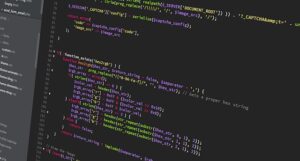Table of Contents
1 Introduction to React.js
Introduction to React.js
React.js is an open-source JavaScript library used for building user interfaces. It was created by Facebook and is now used by many popular companies, including AirBnB, Uber, and Netflix. React.js allows developers to create complex applications that run efficiently in a web browser. It is also used as a base for creating mobile applications using React Native.
React.js is based on the core principles of component reusability and declarative programming. Its main features include a virtual DOM, one-way data flow, and React’s JSX syntax. Reusability allows developers to create components that can be reused and shared across multiple projects, while its declarative syntax makes it easier to read and understand code.
React.js is an excellent choice for developers who wish to build modern, efficient web applications. The library is constantly updated with new features and is well supported by the community. Therefore, learning React.js is a wise investment for any developer who wishes to stay up to date with industry trends.
Where to Learn React.js:
The best place to learn React.js is online. There are numerous tutorials, articles, and interactive courses available. Some of the most popular options include:
• React Documentation: Official documentation from the React team. Contains detailed information on all the fundamentals of React.js.
• Codecademy: An online interactive course for learners of all levels. Covers the basics of React and is suitable for beginners.
• React For Beginners: A comprehensive course by Wes Bos which provides an in-depth look at React.js programming.
• Egghead Video Tutorials: A large collection of video tutorials covering React.js development from beginner to advanced.
• Free Code Camp: An extensive list of React tutorials and resources to get started with React.js.
By taking advantage of the online resources available, developers can learn React.js quickly and effectively. It is also a good idea to attend React conferences and workshops to stay up to date with the latest trends.
2 Common Resources for Learning React.js
Courses and Tutorials
Learning React.js requires an understanding of the JavaScript language and the numerous related libraries. Though not a prerequisite, it is beneficial to have some experience with HTML and CSS as well. Fortunately, there are dozens of courses and tutorials available for beginners and experienced coders alike. When selecting a course or tutorial, you should consider your own goals and skill level.
For beginners, sites like Coursera and Udemy offer comprehensive courses and tutorials that break down the basics of React.js. These courses are usually well organized and provide plenty of practical exercises to help reinforce key concepts. For those with more experience, CodeSchool provides an intensive, hands-on course that covers the entire React.js library. The tutorials are interactive, allowing you to try different techniques on the spot.
Development Communities
Joining an established React.js development community is an excellent way to learn new techniques and collaborate with experienced programmers. The global React.js community is made up of thousands of developers who have created plenty of helpful resources. Reddit and GitHub are popular hubs for sharing code, bug reports, and new projects, while Stack Overflow is the go-to spot for assistance with more complex coding problems.
Development communities also provide an active forum for experimentation. Often, developers will hold project days and hackathons where they can help each other build React.js apps. Being a part of a React.js community also keeps you informed of the latest updates and new features. Participating in such communities gives you the opportunity to ask questions and get feedback from experienced coders.
Conclusion
Are you looking to get started with React.js? There’s no doubt that React.js is quickly becoming one of the most popular JavaScript libraries on the web, and every day more and more developers make the decision to learn it. With the advantages it provides to developers, though, the question remains—where is the best place to learn it?
The web provides an almost infinite number of resources to learn React.js, including blogs, tutorials, and video courses. It can often seem overwhelming when deciding where to start, but the great news is that there’s plenty of options out there to help get you started—you just need to find the right one for you. With so many amazing resources to choose from, here are some tips on how to pick the best one for you.
FAQs
1. What are the best resources to learn React.js?
One of the best resources to learn React.js is Reactjs.org. It provides up-to-date documentation that teaches the fundamentals of React.js as well as more advanced topics. There are also plenty of blogs, tutorials, and video courses available online that teach how to use React.js.
2. How much time would it take to learn React.js?
The amount of time it takes to learn React.js will depend on the individual. Some people may be able to pick up the basics of React.js in a few days, while others may take longer. The important thing is to find the best learning resources for your skill level and take your time as you work through them.
3. Is it worth learning React.js?
Absolutely! React.js provides developers with numerous advantages compared to other frameworks, and learning it can help increase your value as a developer. With the popularity of React.js only continuing to rise, it’s certainly worthwhile learning it.
4. Are there any prerequisites to learning React.js?
Yes, it’s important to know basic HTML, JavaScript, and CSS to make the most of React.js, as it’s built upon these technologies. It may still be worth the effort to learn React.js even without these basics, but having that knowledge can make the learning process easier.
5. What are the best blogs for learning React.js?
Reactjs News is one of the best resources for learning React.js, as it provides up-to-date articles and tutorials on a variety of React.js topics. Additionally, sites such as SitePoint, CSS-Tricks, and CodePen provide plenty of tutorials and demonstrations of React.js’s capabilities.

